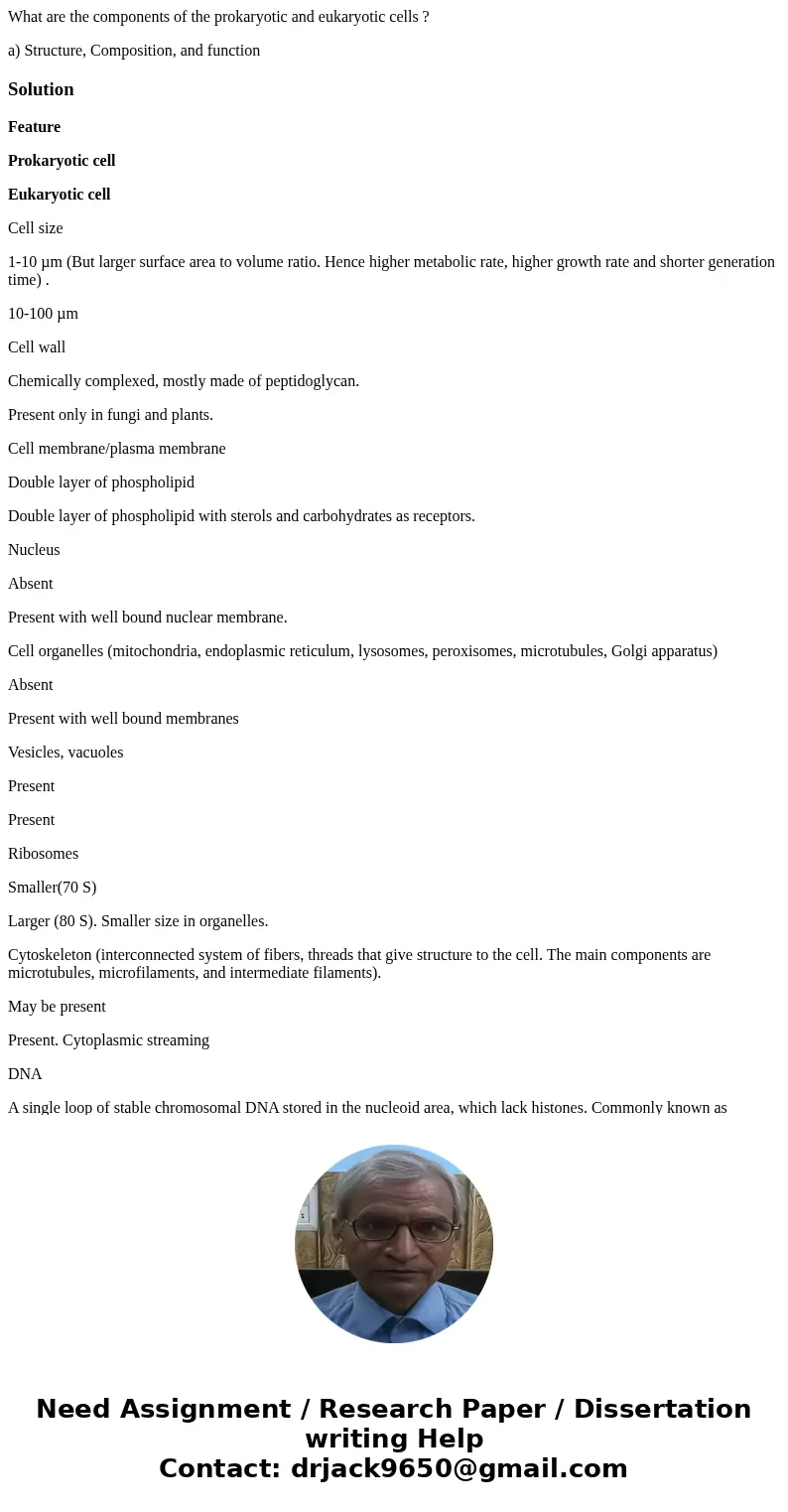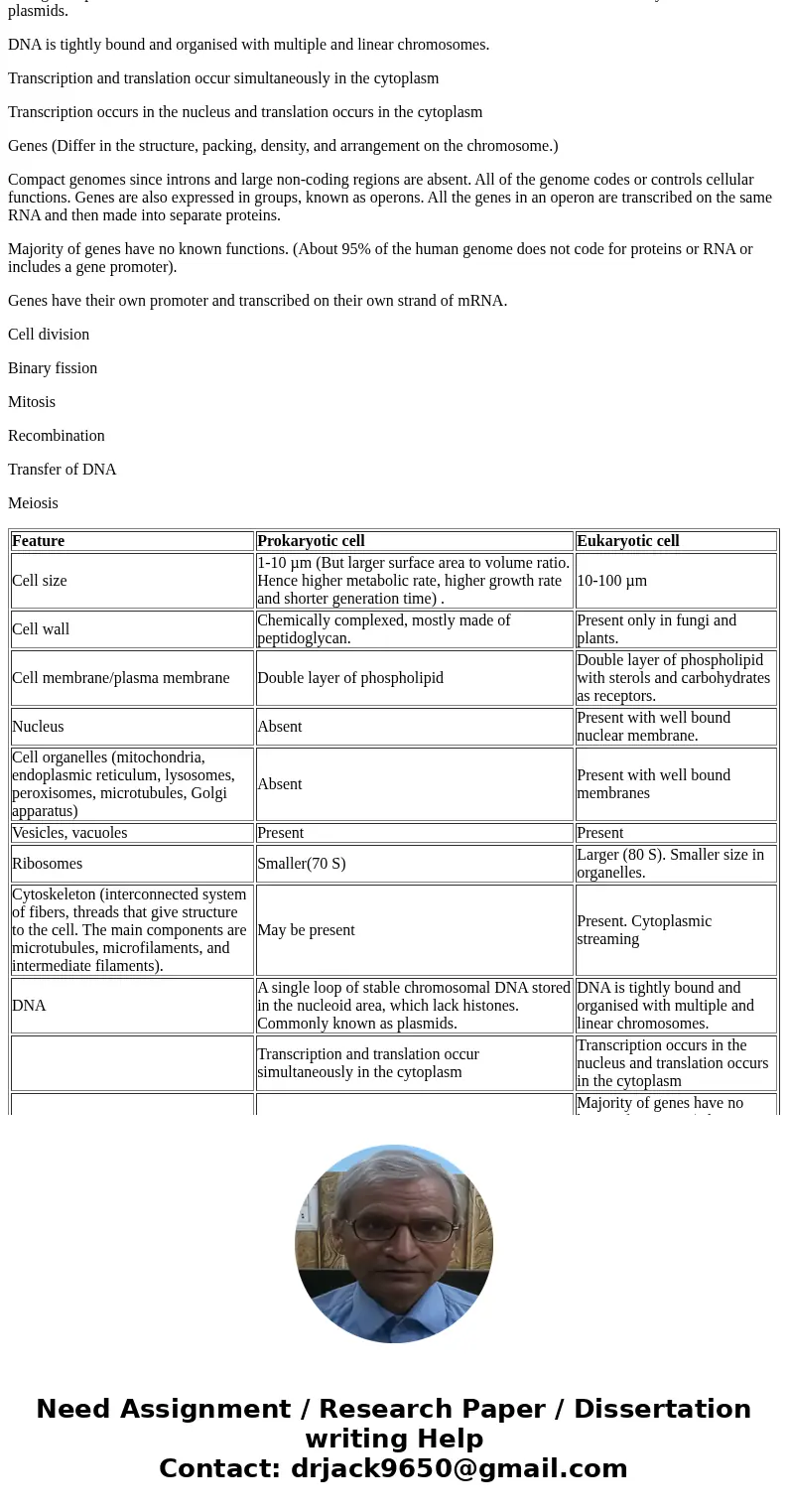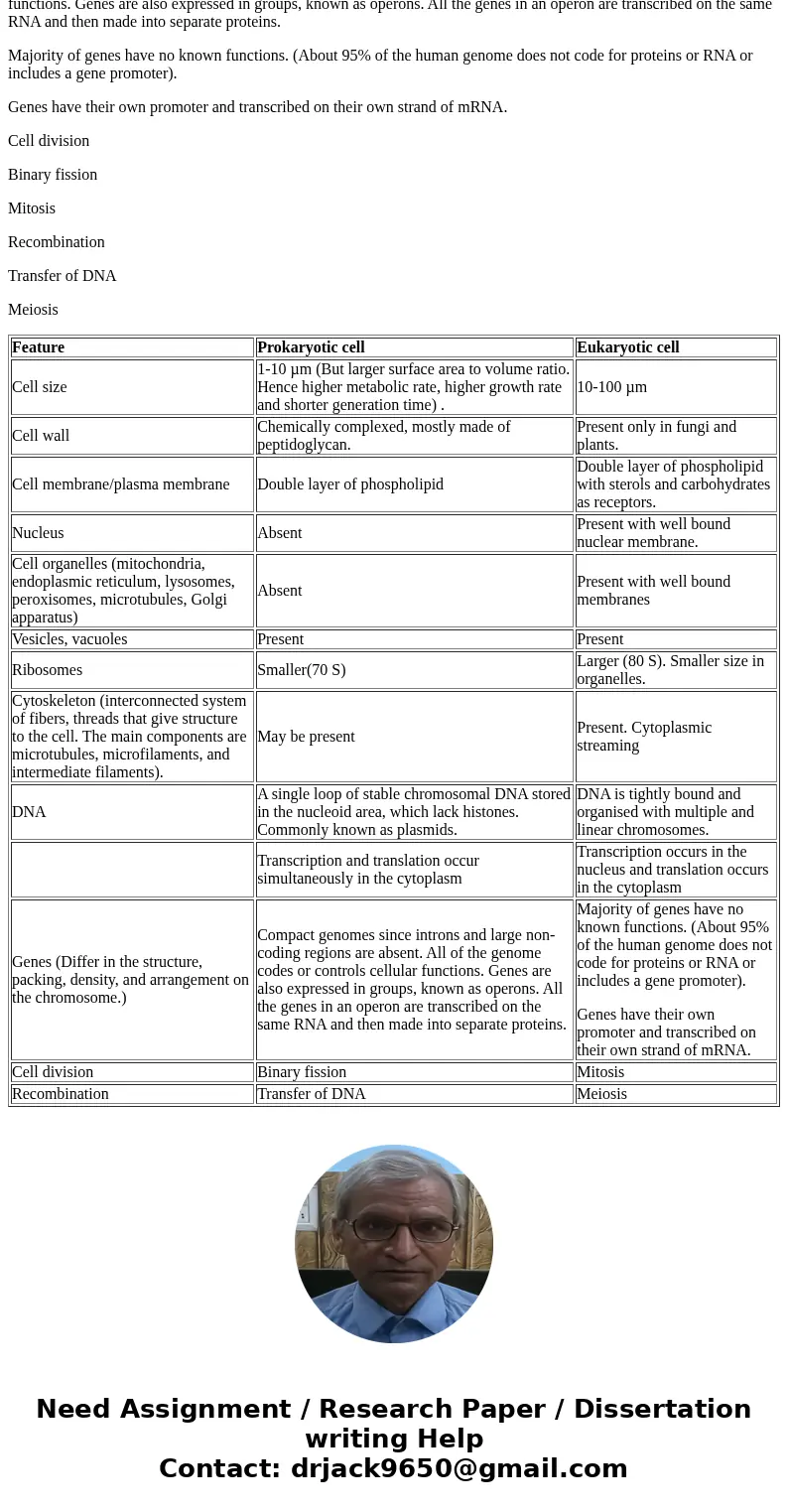What are the components of the prokaryotic and eukaryotic ce
What are the components of the prokaryotic and eukaryotic cells ?
a) Structure, Composition, and function
Solution
Feature
Prokaryotic cell
Eukaryotic cell
Cell size
1-10 µm (But larger surface area to volume ratio. Hence higher metabolic rate, higher growth rate and shorter generation time) .
10-100 µm
Cell wall
Chemically complexed, mostly made of peptidoglycan.
Present only in fungi and plants.
Cell membrane/plasma membrane
Double layer of phospholipid
Double layer of phospholipid with sterols and carbohydrates as receptors.
Nucleus
Absent
Present with well bound nuclear membrane.
Cell organelles (mitochondria, endoplasmic reticulum, lysosomes, peroxisomes, microtubules, Golgi apparatus)
Absent
Present with well bound membranes
Vesicles, vacuoles
Present
Present
Ribosomes
Smaller(70 S)
Larger (80 S). Smaller size in organelles.
Cytoskeleton (interconnected system of fibers, threads that give structure to the cell. The main components are microtubules, microfilaments, and intermediate filaments).
May be present
Present. Cytoplasmic streaming
DNA
A single loop of stable chromosomal DNA stored in the nucleoid area, which lack histones. Commonly known as plasmids.
DNA is tightly bound and organised with multiple and linear chromosomes.
Transcription and translation occur simultaneously in the cytoplasm
Transcription occurs in the nucleus and translation occurs in the cytoplasm
Genes (Differ in the structure, packing, density, and arrangement on the chromosome.)
Compact genomes since introns and large non-coding regions are absent. All of the genome codes or controls cellular functions. Genes are also expressed in groups, known as operons. All the genes in an operon are transcribed on the same RNA and then made into separate proteins.
Majority of genes have no known functions. (About 95% of the human genome does not code for proteins or RNA or includes a gene promoter).
Genes have their own promoter and transcribed on their own strand of mRNA.
Cell division
Binary fission
Mitosis
Recombination
Transfer of DNA
Meiosis
| Feature | Prokaryotic cell | Eukaryotic cell |
| Cell size | 1-10 µm (But larger surface area to volume ratio. Hence higher metabolic rate, higher growth rate and shorter generation time) . | 10-100 µm |
| Cell wall | Chemically complexed, mostly made of peptidoglycan. | Present only in fungi and plants. |
| Cell membrane/plasma membrane | Double layer of phospholipid | Double layer of phospholipid with sterols and carbohydrates as receptors. |
| Nucleus | Absent | Present with well bound nuclear membrane. |
| Cell organelles (mitochondria, endoplasmic reticulum, lysosomes, peroxisomes, microtubules, Golgi apparatus) | Absent | Present with well bound membranes |
| Vesicles, vacuoles | Present | Present |
| Ribosomes | Smaller(70 S) | Larger (80 S). Smaller size in organelles. |
| Cytoskeleton (interconnected system of fibers, threads that give structure to the cell. The main components are microtubules, microfilaments, and intermediate filaments). | May be present | Present. Cytoplasmic streaming |
| DNA | A single loop of stable chromosomal DNA stored in the nucleoid area, which lack histones. Commonly known as plasmids. | DNA is tightly bound and organised with multiple and linear chromosomes. |
| Transcription and translation occur simultaneously in the cytoplasm | Transcription occurs in the nucleus and translation occurs in the cytoplasm | |
| Genes (Differ in the structure, packing, density, and arrangement on the chromosome.) | Compact genomes since introns and large non-coding regions are absent. All of the genome codes or controls cellular functions. Genes are also expressed in groups, known as operons. All the genes in an operon are transcribed on the same RNA and then made into separate proteins. | Majority of genes have no known functions. (About 95% of the human genome does not code for proteins or RNA or includes a gene promoter). Genes have their own promoter and transcribed on their own strand of mRNA. |
| Cell division | Binary fission | Mitosis |
| Recombination | Transfer of DNA | Meiosis |



 Homework Sourse
Homework Sourse